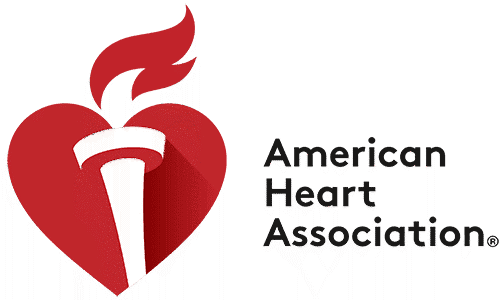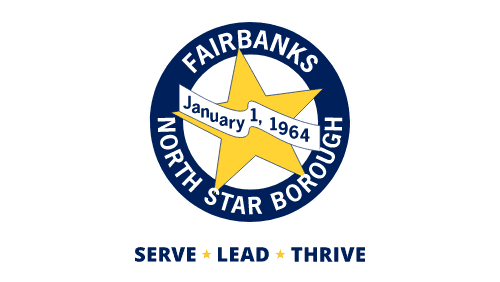Tagged with: American Heart Association
April 28, 2025
What to know to save a life: The key to cardiac arrest survival
Bystander training on spotting and using defibrillators can greatly improve cardiac arrest survival, but many people don’t know what to do.
When a woman collapsed on an escalator at the Buffalo airport last June, Phil Clough knew what to do. He and another bystander put her flat on her back and checked her pulse and her breathing. Then she stopped breathing altogether. Realizing that she might be having a cardiac arrest, Clough immediately started doing chest compressions, pressing hard and quickly on the center of her chest, while others nearby called 911 and ran to get an automated external defibrillator. Within seconds of receiving a shock from the AED, the woman opened her eyes. By the time the airport rescue team arrived a few minutes later, she was conscious and able to talk with rescuers.
Filed Under: News, Highlights | Tagged With: AED, CPR, cardiac arrest, Defibrillator, Defibrillator Registry, Michelle Andrews, Phil Clough, 911, Automated External Defibrillator, Automated External Defibrillator Registry, American Heart Association, AHA, AED Locations, Cardiac Arrest Stats, Identifying AEDs, NEAR Registry, Nearby AED, 911 AED Registry, National AED registry, National Emergency AED Registry, AED Registry, AED Response, AED Responder, AED Map, PulsePoint AED, PulsePoint AED Registry, Elijah White, ZOLL, CPR Training, Good Samaritan, AED Law, AED Training, Citizen CPR Foundation, citizen responder, HEARTsafe, 911 Telecommunicators, T-CPR, T-AED, AED-Needed Alerts

November 27, 2023
911-initiated AED Response: Would you be willing to bring your AED to someone nearby experiencing a cardiac arrest?
While AED registries have traditionally been used to meet regulatory requirements, the growing use of dispatch-accessible, time-of-need emergency AED registries offers meaningful new opportunities to increase the use of these lifesaving devices. In addition to telecommunicator initiatives, communities are going further by using their registries to alert AED owners and program volunteers to nearby cardiac arrest events.
Filed Under: News, Event, Highlights | Tagged With: AED, 911-initiated AED, AED Alert, AED Response, AED Registry, AED Locator, AED Locations, AED Awareness, AED Registration, AED Registry for dispatchers, 911 AED, 911 AED Registry, EMD AED Registry, Emergency AED Registry, American Heart Association, AED Use, Heartrunner, GoodSam, cardiac arrest, Chain of survival, T-CPR, T-AED, EMD, Emergency Medical Dispatcher, Defibrillator Registry, Defibrillator, Integrated AED Locations, Pre-arrival Instructions, Emergency Telecommunicators, Emergency Dispatchers, CPR instructions, Recommending nearby AEDs, The Villages, Sumter County, AED Subscription, Stephen Kennedy, Residential AED, CARES, CARES Registry, Cardiac Arrest Registry to Enhance Survival, Cardiac Arrest Survival Summit, Community AED Volunteer, AED Responder
July 27, 2021
Utilizing a Full-Suite PulsePoint Integration to Address Out-of-Hospital Sudden Cardiac Arrests in Alaska’s Fairbanks North Star Borough
CASE STUDY / APRIL 2021
Alaska’s Fairbanks North Star Borough sought to address the rural community challenges of low bystander engagement and slower response times in out-of-hospital sudden cardiac arrest response. As part of a comprehensive strategy that included participation in the C.A.R.E.S. Registry and Resuscitation Academy, bystander CPR training, CPR and AED awareness programs, and strategic AED placement, Fairbanks launched PulsePoint May 2019.
Filed Under: Case Study, Highlights | Tagged With: Fairbanks, North Star Borough, Alaska, Rural, AED Registry, AED Management, AED Program, AED Registration, AED, Bystander Engagement, CARES, CARES Registry, Sudden Cardiac Arrest, cardiac arrest, Response Time, Resuscitation Academy, CPR, CPR Training, AED Awareness, Strategic AED Placement, Verified Responder, Cardiac Arrest Survival Rate, University of Alaska Fairbanks, Douglas Schrage, EMS Leadership, Case Study, Best Practice, Cardiac Arrest Registry to Enhance Survival, Fairbanks Emergency Communication Center, FECC, PSAP AED Registry, PSAP, PulsePoint Respond, Verified Responder Pro, Bleeding Control Kit, Naloxone, Epinephrine, PulsePoint AED, AED Consumable, Western Fire Chiefs Association, WFCA, Interior Fire Chiefs Association, Geoff Coon, Rotary Club of Fairbanks, Foundation Health Partners, CAD, American Red Cross, American Heart Association

October 22, 2020
Updated American Heart Association Guidelines Recommend Mobile Technology to Alert Bystanders
The AHA’s 2020 CPR Guidelines Recommend Emergency Dispatch Systems Alert Willing Bystanders Through Mobile Phone Technology, Like PulsePoint, to Assist in CPR and AED Retrieval
The 2020 American Heart Association (AHA) Guidelines for Cardiopulmonary Resuscitation (CPR) and Emergency Cardiovascular Care (ECC) were just released to include updated CPR guidelines that direct emergency dispatch systems to use mobile technology to activate early bystander response in sudden cardiac emergencies. The PulsePoint Respond app, the North American standard in alerting willing bystanders to CPR-needed events, is currently in more than 4000 communities and has built a network of more than 2.5 million subscribers.
Filed Under: Press Release, Highlights, News | Tagged With: American Heart Association, AHA, Guidelines, cardiac arrest, AED, AED Registry, Michael Kurz, Alabama Resuscitation Center, Michael Sayre, Steven C. Brooks, Canadian Institutes for Health, CIHR, Queen's University, CPR
